 Emily Robinson, Content Officer at the Forestry Commission, shares some woodland ground flora that can be found at this time of year and what they reveal about the woodland environment.
Emily Robinson, Content Officer at the Forestry Commission, shares some woodland ground flora that can be found at this time of year and what they reveal about the woodland environment.
As spring continues to unfurl, rays of sunlight filter through the emerging canopy, casting a golden glow that transforms the forest floor into a delicate carpet of flowers.
These woodland plants are living indicators of ecosystem health that tell the intricate stories of our woodlands, where even the subtlest shifts in environmental conditions are reflected in the composition of ground vegetation. Sometimes these changes are seen immediately, other times, the change is gradual with plant populations steadily declining or increasing.
Here I’ll share five plants that each offer a window into the world beneath our trees.
1. Wood anemone
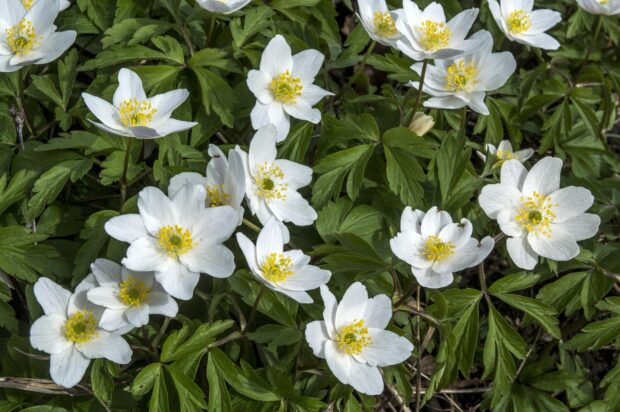
Wood anemones (Anemone nemorosa) form white carpets revealing centuries of woodland history. The flowers are white with lots of distinctive yellow anthers on long stalks.
As indicators of ancient woodland sites, these slow-growing plants spread leisurely, only a few centimetres a year, requiring decades to establish. Their presence signals to foresters that a site has long-term stability and should be managed with sensitivity.
They prefer dappled shade but have been known to tolerate or even thrive in higher light levels. They flourish under traditional practices such as coppicing that mimic natural woodland dynamics, but lack of disturbance to the soil is key.
Their distribution speaks to the subtle interplay of environmental factors and forestry practices that have shaped the woodland over generations.
2. Bluebells
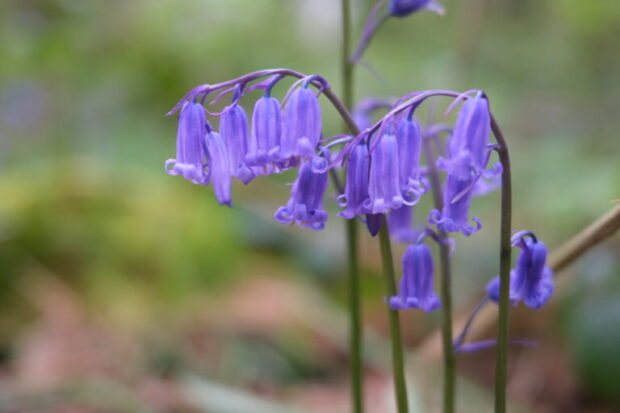
Bluebells (Hyacinthoides non-scripta) are perhaps the most iconic of British deciduous woodland flora. Each year they transform our woodland floors into dense seas of vibrant blue. Our native bluebell flowers are easily recognisable by their drooping stems whereas the Spanish and hybrid species stand upright.
Dense bluebell populations indicate long established woodlands with stable soil conditions. Bluebells are particularly sensitive to soil disturbance and trampling, struggling on sites which are heavily used, or where the soil structure is damaged.
Where present, woodlands are ideally managed with light machinery and as little impact on soil structure as possible. However, carpets of bluebells can continue to grow even after trees are removed, telling you a story of lost, or ghost, woodlands.
3. Lesser celandine
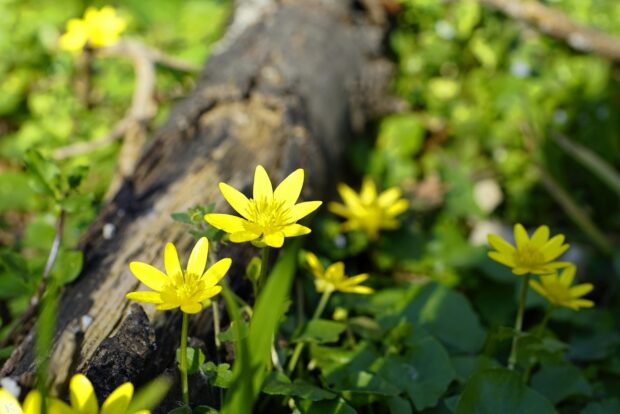
Lesser celandine (Ficaria verna) is part of the buttercup family and announces spring with its bright yellow flowers that look like little stars. These are low growing plants with bright green heart-shaped leaves growing on long stalks.
Dense carpets of lesser celandine reveal woodland ecosystems with consistent ground temperatures, excellent water retention and minimal soil disruption.
Their early emergence provides ecologists with immediate insights into the woodland's microclimate.
4. Wild garlic
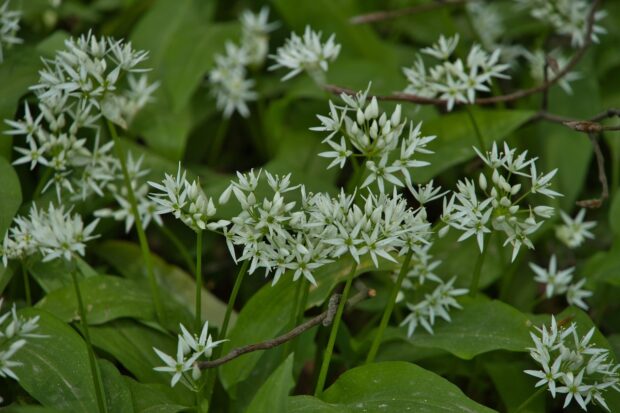
Wild garlic (Allium ursinum) transforms woodland floors into extensive, white-flowered landscapes in April and May. They have broad, pointed bright green leaves with smooth edges. These leaves have a strong garlic smell because of the sulphur containing compounds in their cells.
The flowers are small and white, looking like stars that appear in clusters at the end of a single, long stem.
These plants are picky in their habitat requirements, flourishing in areas of shady woodland with high soil moisture and rich organic matter. Their dense, uniform carpets suggest well-established woodland ecosystems with stable, undisturbed soils.
5. Primrose
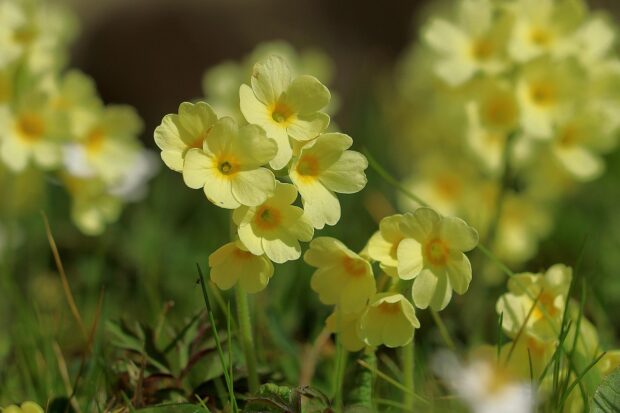
Primroses (Primula vulgaris) bring soft yellow hues to woodland edges and clearings. They are low growing perennials with a rosette of crinkly, tongue-shaped leaves. The flowers are pale yellow with five petals and a deeper yellow centre, each standing on its own stem.
These slow-spreading plants thrive in slightly acidic, well-drained soils with varied light conditions. Their presence suggests a woodland that has balanced light levels, documenting conditions that have remained consistent, or cycled slowly through coppice rotations for potentially hundreds of years.
Help your woodland plants thrive
When a woodland’s ground layer is diverse and robust, these understory plants signal a thriving, balanced ecosystem – each species a reflection of its environmental conditions.
Conversely, shifts in species composition may indicate emerging climate challenges, human disturbance or subtle alarms of broader environmental disruption. These plants face significant challenges in modern landscapes.
Climate change disrupts traditional flowering cycles as rising temperatures alter the delicate balance of light, moisture and seasonal timing that woodland plants depend on.
Fortunately, there are practices that you can implement in your woodland to help these species thrive:
- implement careful coppicing or thinning strategies to maintain diverse light environments
- encourage woodland users to stick to designated paths to avoid trampling
- maintain minimal intervention in sensitive woodland areas
- consider the timing of forestry operations to minimise impact on flowering cycles
- limit or avoid soil disturbance where possible, particularly in ancient woodlands

Woodland plants are far more than passive participants in the woodland ecosystem. Supporting and encouraging the diversity of woodland plants also supports broader ecosystem health. They play critical roles beyond creating beautiful spring displays. Woodland plants provide essential food sources for early pollinators, create intricate microhabitats for insects and drive crucial nutrient cycling processes that sustain the entire woodland community.
Enjoy the fleeting moments of spring
As spring progresses and the tree canopy gradually closes, these plants complete their annual cycle – storing energy in underground structures, setting seed and preparing for next year's emergence.
Each fleeting carpet of white anemones, patch of bluebells and cluster of primroses represents a moment of renewal. They invite us to pause, to observe and to appreciate the intricate life cycles that sustain our woodlands.
Their brief, vibrant presence is a reminder of nature's resilience following the hard frosts of winter and are part of what makes our woodlands so extraordinary.
Read Emily’s blog on the role of wood ants as a woodland health indicator species.
All images are sourced from Pixabay with the exception of the first bluebell image which is Crown copyright.
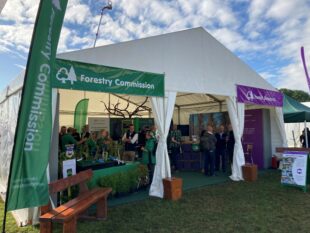

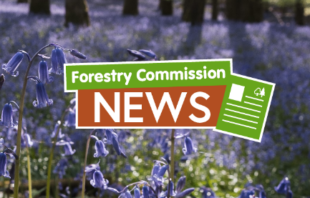
Leave a comment